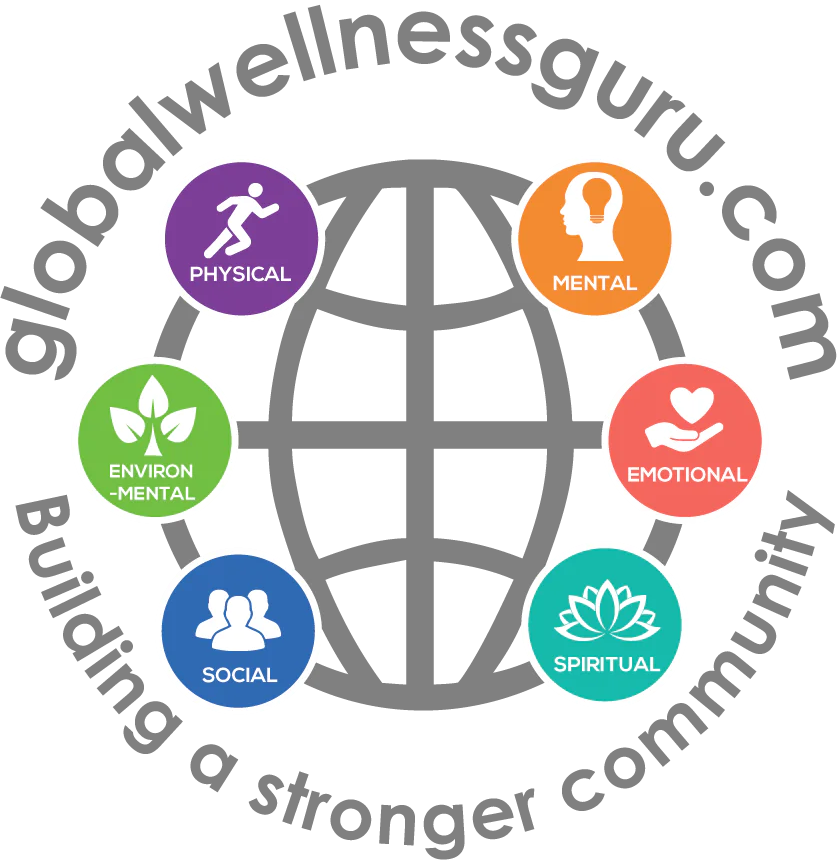As September 2024 rolls around, we once again find ourselves in the midst of Healthy Aging Month – a time to focus on the positive aspects of growing older and to explore ways to maintain and improve our health as we age. This year, let’s dive deep into the various facetsof healthy aging, from physical fitness to mental acuity, social connections to nutritional needs. Whether you’re just entering your golden years or you’re well into your journey, there’s always room to learn, grow, and thrive.
The Importance of Healthy Aging
Healthy aging isn’t just about adding years to your life; it’s about adding life to your years. With advances in medicine and technology, people are living longer than ever before. The 2020 U.S. Census revealed that the population of Americans aged 65 and older grew at its fastest rate since the 1880s between 2010 and 2020. Now, one in six people in the U.S. is 65 or older[1]. This demographic shift underscores the importance of maintaining a healthy lifestyle to prevent common health concerns that older Americans may face.
As we age, our bodies and minds undergo various changes. Some of these changes are inevitable, but many can be influenced by our lifestyle choices. By adopting healthy habits, we can reduce the risk of chronic conditions such as diabetes, arthritis, and heart disease, as well as potentially delay or prevent the onset of cognitive decline and other age-related issues.
Physical Health: Staying Active and Strong
Physical activity remains one of the cornerstones of healthy aging. Regular exercise can help maintain muscle mass, improve balance and flexibility, boost cardiovascular health, and even enhance cognitive function. But what does an effective exercise routine look like for older adults?
The Power of Resistance Training
Contrary to popular belief, older adults can and should engage in resistance training. Dr. Hillary Lum, an associate professor of geriatrics at the University of Colorado School of Medicine, emphasizes that older adults can benefit significantly from lifting heavier weights to the point of fatigue[1]. This type of training can lead to improvements in balance and endurance,potentially reducing the risk of falls and the need for mobility aids.
To get started with resistance training:
- Begin with bodyweight exercises like squats, wall push-ups, and chair dips.
- Gradually introduce light dumbbells or resistance bands.
- Focus on proper form to prevent injury.
- Aim for 2-3 sessions per week, allowing for rest days in between.
- Consult with a fitness professional or physical therapist to design a safe and effective program tailored to your needs.
Cardiovascular Exercise: Keep Your Heart Pumping
Aerobic exercise is crucial for maintaining heart health and overall endurance. The Centers for Disease Control and Prevention (CDC) recommends that older adults get at least 150 minutes of moderate-intensity aerobic activity or 75 minutes of vigorous-intensity aerobic activity per week[1].
Some enjoyable cardiovascular activities for seniors include:
- Brisk walking
- Swimming or water aerobics
- Cycling (stationary or outdoor)
- Dancing
- Low-impact aerobics classes
Remember, any activity is better than no activity. If you’re just starting out, even short bouts of exercise throughout the day can make a difference.
Flexibility and Balance: The Unsung Heroes of Fitness
As we age, maintaining flexibility and balance becomes increasingly important for preventing falls and maintaining independence. Incorporate stretching and balance exercises into your daily routine[1]:
- Try yoga or tai chi classes designed for seniors
- Practice simple balance exercises like standing on one foot (with support if needed)
- Perform gentle stretches daily, focusing on major muscle groups
Mental Health: Keeping Your Mind Sharp[3]
Cognitive health is just as important as physical health when it comes to aging well. Engaging in mentally stimulating activities can help maintain cognitive function and potentially reduce the risk of dementia.
Active Learning: Challenge Your Brain
Dr. Lum recommends prioritizing activities that are more active rather than passive. Some ideas include:
- Learning to play a musical instrument
- Joining a choir and learning new music
- Taking up a new hobby or skill, such as painting, photography, or a foreign language
- Playing strategy games with others, like chess or bridge
Social Engagement: The Key to Cognitive Vitality
Staying socially connected is crucial for maintaining mental health and cognitive function. Social isolation and loneliness have been linked to various health issues, including high blood pressure, obesity, anxiety, depression, and cognitive impairment.
To boost your social connections:
- Join local clubs or groups based on your interests
- Volunteer in your community
- Attend events at your local library or community center
- Use technology to stay in touch with family and friends through video calls
- Consider joining programs like COAST-IT (Connecting Older Adults to Students) that pair older adults with students for regular social interactions
Embracing Technology
The COVID-19 pandemic pushed many older adults to cross the “digital divide” and become more comfortable with technology. This newfound digital literacy opens up a world of opportunities for staying connected and mentally engaged:
- Participate in online exercise classes
- Join virtual book clubs or discussion groups
- Explore free online courses through platforms like Coursera or edX
- Use brain-training apps designed for cognitive stimulation
Nutrition: Fueling Your Body and Mind
A balanced diet is essential for healthy aging, providing the nutrients necessary for physical and cognitive health. As we age, our nutritional needs change, and it’s important to adapt our eating habits accordingly.
Key Nutrients for Older Adults
- Protein: Essential for maintaining muscle mass and strength
- Calcium and Vitamin D: Crucial for bone health
- Fiber: Aids in digestion and helps maintain a healthy weight
- Omega-3 fatty acids: Support brain and heart health
- B vitamins: Important for energy metabolism and cognitive function
Meal Planning and Preparation
For many older adults, especially those living alone, meal preparation can become a challenge.
Here are some strategies to ensure you’re getting proper nutrition:
- Plan your meals in advance to ensure a balanced diet
- Cook in batches and freeze portions for later use
- Consider meal delivery services that cater to seniors
- Explore community dining programs or senior centers that offer meals
- Make mealtime a social event by inviting friends or family to join you
Staying Hydrated
Proper hydration is often overlooked but is crucial for overall health. As we age, our sense of thirst may diminish, making it important to consciously increase fluid intake. Aim for at least 8 glasses of water a day, and consider these tips:
- Keep a water bottle with you at all times
- Eat foods with high water content, like fruits and vegetables
- Limit caffeine and alcohol, which can contribute to dehydration
- Set reminders to drink water throughout the day
Sleep: The Foundation of Health[5]
Quality sleep is vital for physical restoration, cognitive function, and emotional well-being. Many older adults experience changes in their sleep patterns, but there are steps you can take to improve your sleep quality:
- Stick to a consistent sleep schedule, even on weekends
- Create a relaxing bedtime routine
- Limit screen time before bed
- Keep your bedroom cool, quiet, and dark
- Avoid large meals, caffeine, and alcohol close to bedtime
- Stay active during the day to promote better sleep at night
If you’re experiencing persistent sleep issues, consult with your healthcare provider, as they may be a sign of an underlying condition like sleep apnea or restless leg syndrome.
Preventive Healthcare: Staying Ahead of the Curve[1][5]
Regular check-ups and screenings are essential for detecting and preventing health issues before they become serious. As we age, it’s important to stay on top of our health through:
- Annual physical exams
- Regular vision and hearing tests
- Dental check-ups and cleanings
- Cancer screenings (e.g., mammograms, colonoscopies)
- Bone density scans
- Vaccinations (e.g., flu shot, shingles vaccine)
Don’t hesitate to discuss any health concerns or changes with your healthcare provider, no matter how small they may seem.
Embracing Mindfulness and Stress Management[5][6]
Stress can take a toll on both physical and mental health, making stress management an important aspect of healthy aging. Mindfulness practices can help reduce stress, improve emotional well-being, and even boost cognitive function.
Consider trying:
- Meditation or guided relaxation exercises
- Deep breathing techniques
- Progressive muscle relaxation
- Mindful movement practices like yoga or tai chi
- Journaling or expressive writing
Fall Prevention: Staying Safe and Independent[6]
Falls are a major concern for older adults, often leading to serious injuries and loss of independence. Implementing fall prevention strategies can significantly reduce your risk:
- Keep your home well-lit and free of clutter
- Install grab bars in the bathroom and handrails on stairs
- Wear properly fitting, non-slip shoes
- Have your vision and hearing checked regularly
- Review your medications with your doctor for any that may affect balance
- Engage in exercises that improve strength and balance
The Role of Technology in Healthy Aging[6]
As technology continues to advance, it offers numerous tools to support healthy aging:
- Wearable devices to track physical activity and vital signs
- Smartphone apps for medication reminders and health tracking
- Virtual reality experiences for cognitive stimulation and social connection
- Smart home devices to enhance safety and independence
- Telehealth services for convenient access to healthcare providers
While technology can be intimidating for some older adults, many local libraries and community centers offer classes to help seniors become more comfortable with these tools.
Celebrating Diversity in Aging[5]
It’s important to recognize that the aging experience is not one-size-fits-all. Cultural background, life experiences, and individual circumstances all play a role in how we age. Embracing this diversity can lead to more inclusive and effective approaches to healthy aging.
Consider:
- Seeking out culturally appropriate healthcare and wellness resources
- Participating in community events that celebrate diverse aging experiences
- Sharing your own unique perspective and learning from others
Planning for the Future
While focusing on present health is crucial, planning for the future is an important aspect of healthy aging. This might include:
- Discussing advance care planning with your loved ones and healthcare providers
- Exploring options for long-term care and housing
- Managing your finances and estate planning
- Considering how you want to leave a legacy
Having these conversations and making plans can provide peace of mind and ensure that your wishes are respected as you age.
Conclusion: Embracing the Journey of Aging
As we celebrate Healthy Aging Month 2024, let’s remember that aging is not something to be feared or resisted, but a natural part of life that can be embraced with positivity and purpose.By focusing on physical health, mental well-being, social connections, and preventive care, we can make the most of our golden years.
Every small step towards a healthier lifestyle counts. Whether it’s adding a daily walk to your routine, learning a new skill, or scheduling that overdue check-up, you’re investing in your future self. Remember, it’s never too late to start prioritizing your health and well-being.
As you navigate your own aging journey, be kind to yourself, celebrate your accomplishments, and don’t hesitate to seek support when needed. With the right mindset and tools, the best years of your life may very well be ahead of you.
Here’s to a healthy, vibrant, and fulfilling life at any age!
References:
- Glasgow, Greg. “Aging Healthily during Healthy Aging Month.” Cuanschutz.edu, University of Colorado Anschutz Medical Campus, Sept. 2023, news.cuanschutz.edu/medicine/healthy-aging-month-2023.
- “Healthy Aging Month 2024: Shaping the Future of Aging.” National Institute on Aging, Sept. 2024, www.nia.nih.gov/news/healthy-aging-month-2024-shaping-future-aging.
- “September Is Healthy Aging® Month.” Chronic Disease, 24 Aug. 2023, www.canr.msu.edu/news/live_smart_reduce_the_risk_of_chronic_diseases.
- “Healthy Aging Month | Homeland Security.” U.S. Department of Homeland Security, 2022, www.dhs.gov/employee-resources/news/2022/09/06/healthy-aging-month.
- Abud, Thais et al. “Determinants of healthy ageing: a systematic review of contemporary literature.” Aging clinical and experimental research vol. 34,6 (2022): 1215-1223. doi:10.1007/s40520-021-02049-w
- Council, Research. “Enhancing Healthy Aging.” Nih.gov, National Academies Press (US), 2024, www.ncbi.nlm.nih.gov/books/NBK220195/.







